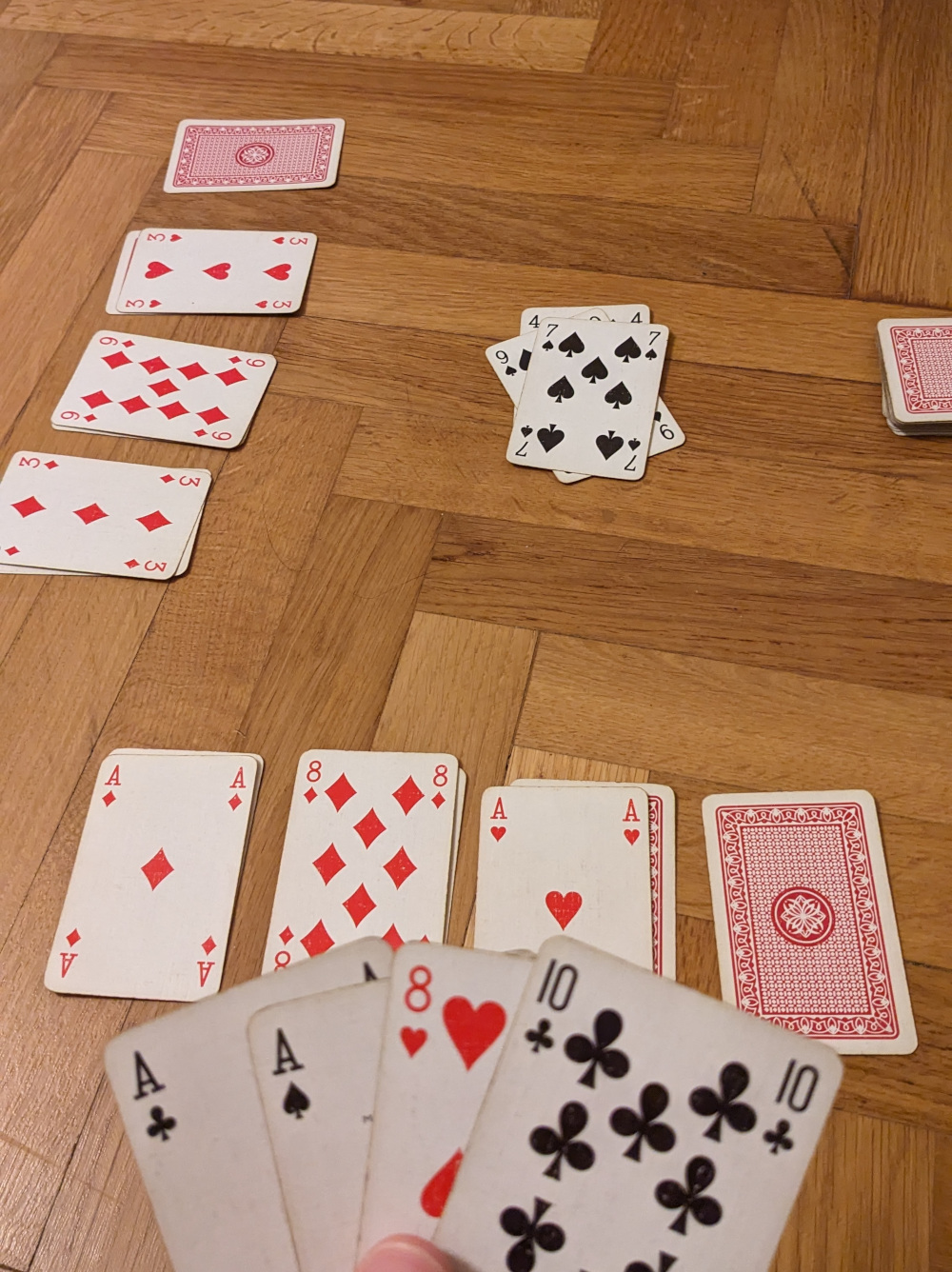Motivation
At high school, we got bored at 10-minute breaks between classes. So my friends taught me a card game. I remember it thoroughly, but I cannot tell its origin. Technically, we called it “stress”, but looking at the German Wikipedia article, I only recognize different rules.
The rules
Distribution of cards
-
Each player gets 4 cards to be placed face-down in front.
-
Each player gets 4 cards to be placed on top of face-down cards face-up.
-
Each player gets 4 cards to be held in hands and only the player himself/herself may see the card.
-
The remaining cards are put into a stack in the center of all players face-down (drawing stack).
-
One card is removed from the drawing stack and placed face-up. This card initiates the game stack.
-
The card cementery is the final stack. Once a card is moved there, it cannot be played anymore.
Each player is allowed to exchange cards from one’s hand with the cards placed face-up. The strategic goal is to have your most valuable cards as face-up cards to your avail. What signifies “valuable” follows from the next section.
The value of a card
Players take turns counter-clockwise.
They have to play a card to react to the top card on the game stack. Suits do not matter. In order to react, one must place one or more cards on top of the game stack; commonly a card of same or higher value (the order from lowest to highest is 2 3 4 5 6 7 8 9 10 J Q K A).
-
If and only if you have several cards of the same value, you may place them on the game stack in one turn.
-
However, some cards have special semantics:
- 2
-
may be played at any point in time, a card of any value may be placed on top.
- 3
-
may be played at any point in time, this card is ‘invisible’ and thus the value of the top card below matters (if there is none, it acts like a ‘2’).
- 8
-
the next player has to skip.
- 9
-
the next card to be played must have a value less-than nine.
- 10
-
the entire game stack is moved to the cemetery. The same player starts a new game stack with any card.
-
If you fail to provide a card, you have to pick up the entire game stack. All those cards now constitute your cards in your hands to react with (recognize: having many cards available, can provide an advantage in your strategy to react as well). The next player continues and begins a new game stack with any card.

Who wins the game
-
First, you may only play the cards in your hands. If you have less than 4 cards, you need to draw one card from the drawing stack as long as some are available.
-
If you have no “cards in your hands” left anymore, you have to play with the four faced-up cards in front of you. Recognize: it is an advantage for other players to know your values now. They can slow down your progress with the last remaining cards.
-
If you have no “faced-up cards” left anymore, you have to play with the four faced-down cards now. Since no-one can see the value of the cards (not even the selecting player), the player picks an arbitrary one and hopes to provide an admissible card. Even if you fail four times, each turn one faced-down card was removed and thus the selecting player makes progress.
If all cards in one’s hands, faced-up, and faced-down have been placed admissibly on the game stack, the player has finished. The player which finished the fastest, has won.